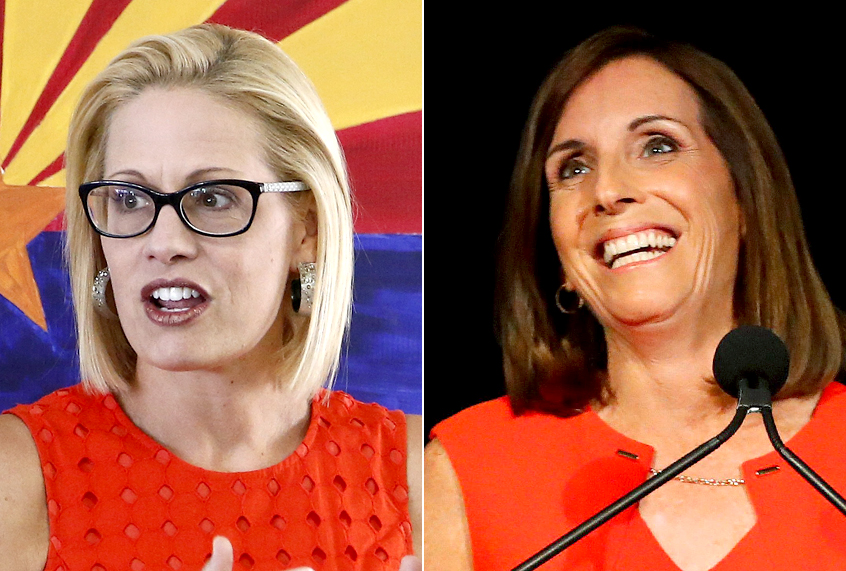Rep. Kyrsten Sinema, the Democratic candidate for United States Senate in Arizona, is currently ahead of Rep. Martha McSally, the Republican candidate competing for that same seat.
Fifty percent of likely voters say they will support Sinema in the upcoming election, according to a new poll by NBC News/Marist. By contrast, only 44 percent of likely voters say they will support McSally when they cast their ballot next Tuesday. Six percent of the likely voters surveyed are either undecided or would prefer a third-party candidate. It is notable, however, that when Green Party candidate Angela Green appears on the ballot, Sinema’s lead over McSally drops from to 3 points, with Sinema having 47 percent of the vote to McSally’s 44 percent of the vote.
Overall Sinema is doing significantly better than she did in September when the poll found that she had 48 percent of the vote to McSally’s 45 percent of the vote. Sinema is also doing better than her performance in a recent CBS News/YouGov poll, one that found her 47 percent of the vote to McSally’s 44 percent of the vote. Earlier this month those numbers were flipped, with Sinema behind McSally by anywhere from 2 percent to 6 percent of the vote.
The last-minute red state surge for Democrats isn’ just limited to Arizona.
According to a new poll released on Monday, Democrat Beto O’Rourke has cut Ted Cruz’s lead in their Texas Senate race from 9 points earlier this month to only 5 points.
Despite Sinema’s and O’Rourke’s improved performances, however, the odds are still against the Democrats reclaiming the Senate. Because more Democratic incumbents are up for reelection than Republicans, statistical analysis website Fivethirtyeight projects that there is a 17.4 percent chance of the Republican Party maintaining a 51-49 majority in the Senate, a 16.6 percent chance that they will have a 52-48 majority, a 15.3 percent chance that there will be a 50-50 split (which would give the GOP nominal control because Vice President Mike Pence would have the tie-breaking vote) and a 13.1 percent chance of Republicans having a 53-47 majority. Combined this means that the odds are greater than three out of five that Republicans will have between 50 and 53 Senate seats after the midterm elections.
By contrast, Fivethirtyeight is more ambivalent about the prospects for Democrats reclaiming the House of Representatives, making it seem more likely than not while acknowledging the statistical uncertainty. As Nate Silver wrote on Tuesday:
All of this sets up what could be a feast-or-famine evening for Democrats next Tuesday. They have a huge number of opportunities to win Republican seats — around 100 of them! And yet, it would be hard to circle more than about 12 or 15 of these districts that can safely be predicted to wind up in Democrats’ hands. If things go roughly to form nationwide, Democrats almost certainly will get there. But even a modest pro-GOP polling error — if Republicans were to beat their polls by 2 or 3 points across the board — would revert the overall race to being a toss-up. Conversely, even a modest, pro-Democratic polling error could send their number of pickups careening into the 50s, or higher. The wide ranges in our forecast reflect the uncertain conditions on the ground.


